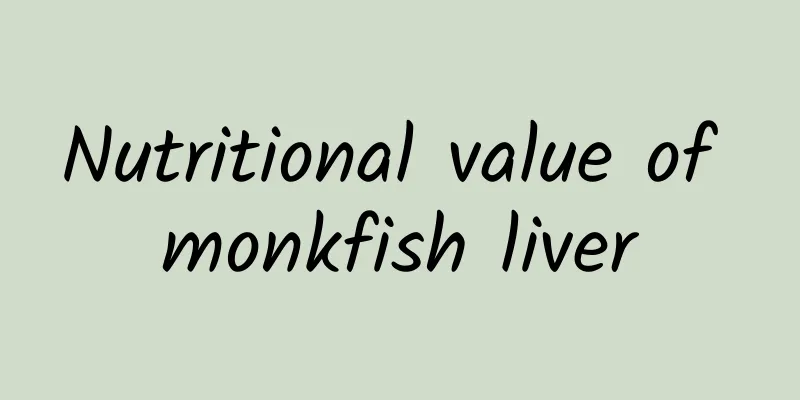Nutritional characteristics and analysis of crabapple

|
I believe that you have rarely seen crabapples in your daily life. Let me give you some detailed knowledge about this fruit. I hope you like it. CrabappleThe crabapple is a fruit of the apple plant in the Rosaceae family. There are many varieties, mainly: 1. The flower is white, the skin is bright red, the flesh is yellow-white, the fruit is fragrant, and it is sweet and crispy when eaten fresh. It is produced in abundance in Huailai, Hebei, and is also grown in other northern regions, including Yunnan. 2. The Western Mansion crabapple (also called the small crabapple fruit, with a flower color of 1.340. The red crabapple produced in Lijiang, Yunnan, has pink and white fruits and is a famous ornamental flower. The fruit is yellow with red, sweet and sour, and is mostly planted in northern my country. 3. The weeping crabapple, also known as the weeping crabapple, has pink flowers and drooping pedicels, which is very beautiful and is also a famous ornamental flower. The fruit of the weeping crabapple is smaller than that of other crabapples, red and yellow, exquisite and cute, mainly for viewing, sweet and sour, and can also be eaten. It is planted all over the country, but mainly distributed in the southwest, especially Sichuan. Only 1.2 of the above varieties are often cultivated for consumption. Among them, 2.3 are mainly used for viewing. The crabapple has beautiful colors and a chic posture, which is homophonic with the word "tang". If it is planted with osmanthus and magnolia, it means "wealthy and noble". Its fruit is attractive in color and edible, making it a popular flower, fruit and ornamental tree. The morphological characteristics of crabappleSmall deciduous tree, 3-10 meters high; twigs are hairy when young. Leaves are ovate to elliptical, flowers are white or slightly reddish, single petal, about 3 cm in diameter, sepals are longer and pointed than the calyx tube, persistent. Fruits are round or oval. Twigs are sturdy, densely short and soft when young, gray-purple or old branches Gray-brown, glabrous. Leaves are alternate; petiole is 1-5cm long, young fruit is densely covered with soft hairs; The leaves are ovate or elliptic, 5-9cm long, 4-5cm wide, acuminate or acute at the apex, broadly cuneate at the base, with fine sharp serrations on the margins. The flowers are bisexual; umbel or subumbel inflorescence, with 4-10 flowers; the pedicels are 2-3.5cm long, with short soft hairs; the calyx tube is long soft hairs on the outside; the calyx lobes are 5, lanceolate, with soft hairs on both sides; the flowers are white or pinkish, with 5 petals, obovate-elliptic, about 2.5-3cm long, about 1.5cm wide, with short claws at the base; 20 stamens, filaments are short and uneven, about one-third of the petals; 4 (5) pedicels, with long pubescence at the base, longer than the stamens. The pear fruit is ovate, 2-2.5cm in diameter, red, with persistent calyx lobes, thick, and slender fruit pedicels. Flowering period is April-May, and fruiting period is August-September. Nutritional analysis of crabapple1. Promoting the production of body fluids and quenching thirst: Begonia contains sugars, multiple vitamins and organic acids, which can help replenish the intracellular fluid of the human body, thus having the effect of promoting the production of body fluids and quenching thirst; 2. Strengthen the spleen and stimulate appetite: Begonia fruit is rich in vitamins, organic acids and amino acids, which can help the gastrointestinal tract digest food, so it can be used to treat indigestion, food accumulation and abdominal distension. 3. Astringent and dysentery-stopping: Begonia tastes sweet and slightly sour. Sweetness can relieve the middle part, and sourness can astringe. It has the functions of astringing and stopping diarrhea, and can treat diarrhea, dysentery, loose stools and other symptoms; 4. Nutritional supplement: Begonia contains a large amount of nutrients necessary for the human body, such as sugars, multiple vitamins, organic acids, etc., which can provide nutrients to the human body and improve the body's immunity. |
<<: Nutritional analysis of crabapple
>>: Begonia family diet recipes
Recommend
The efficacy and effects of Sichuan cherries Benefits of eating Sichuan cherries
Sichuan cherry is a precious variety. It is mainl...
What are the effects and functions of oatmeal? Does oatmeal have any side effects?
Oatmeal is the most popular health food in life. ...
What is Aerie like? Aerie reviews and website information
What is Aerie? Aerie is a famous American lingerie...
What should you pay attention to when eating kumquats?
Kumquat is a small orange variety with high nutri...
The effect of tomato scrambled eggs
We all know that tomato and egg is a dish with ce...
How to cook zongzi Tips to keep zongzi from falling apart
Cooking zongzi is a traditional custom of the Dra...
How to squeeze grapefruit juice to make delicious grapefruit juice
Grapefruit juice is a delicious juice. It is a na...
Lycopene benefits and effects
People who like to eat tomatoes should know about...
How to make delicious chicken feather vegetables? How to make delicious chicken feather vegetables
Have you heard of Chinese cabbage? It is a green ...
McVitie's reviews and website information
McVitie's_What is McVitie's website? McVit...
How to make delicious Jerusalem artichoke pickles
How to make Jerusalem artichoke pickles? I think ...
How to cook longan How to cook longan
I believe everyone is interested in the complete ...
How is AU? AU reviews and website information
What is the AU website? The African Union (AU) is ...
Ingredients and methods for homemade mushroom sauce
By chance, I bought a bottle of mushroom sauce in...
The efficacy and function of honeysuckle
Honeysuckle is a plant unique to China. It is a d...









